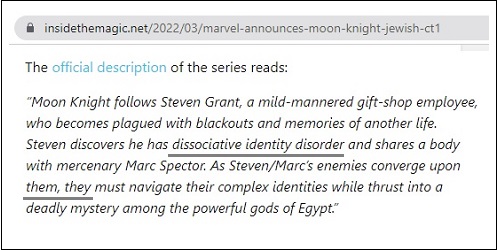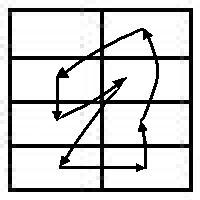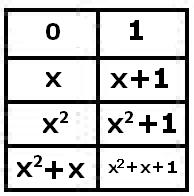Friday, January 26, 2024
For London Werewolves: Steppenwolf and the Moon Knights
Sunday, May 1, 2022
Jailbait Puzzle for Moon Knight


The pane number of interest — 15 or 14 ? —
depends on your perspective.
Related cinematic art of Oscar Isaac —

Wednesday, April 27, 2022
Ennead (Pace Moon Knight)
Sunday, May 26, 2024
Wednesday, May 4, 2022
Disney Wars
Monday, May 2, 2022
Art Wars
"Moon Knight" will conclude at 3 AM ET Wednesday.
Related art —
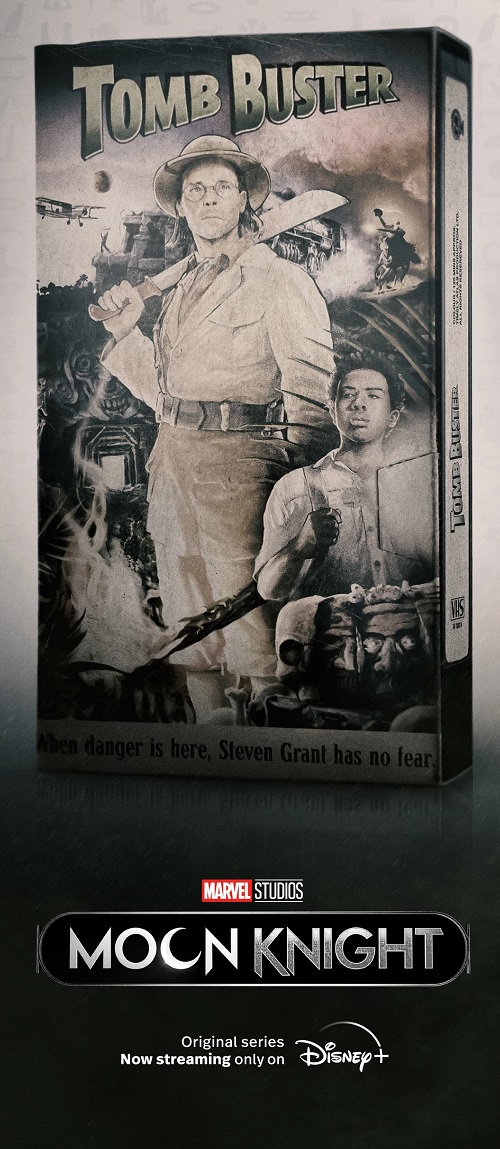
Related cinematic art — ("Tomb Raider," 2018) —
An image that some — perhaps even Uncle Walt himself —
might prefer to the above depiction of Lara Croft —
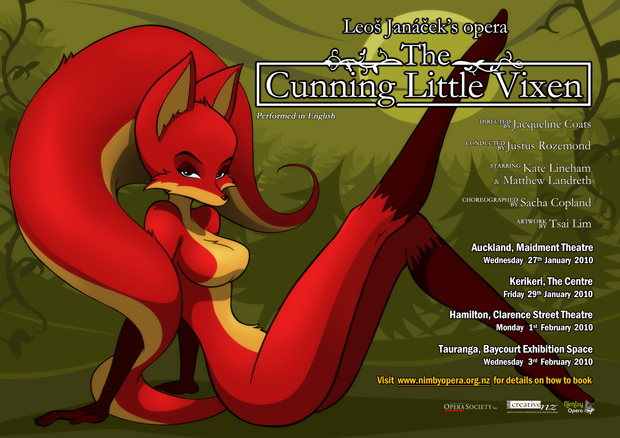
Wednesday, May 15, 2024
Transformer Problems (Before the Pretrained Ones)
Sunday, May 1, 2022
Grasp the Stars* . . . Illustrated!
* See the previous two posts, now also tagged Play Room.
Wednesday, March 30, 2022
Wednesday, March 23, 2022
Watchmen Squid Game: Pronoun Trouble
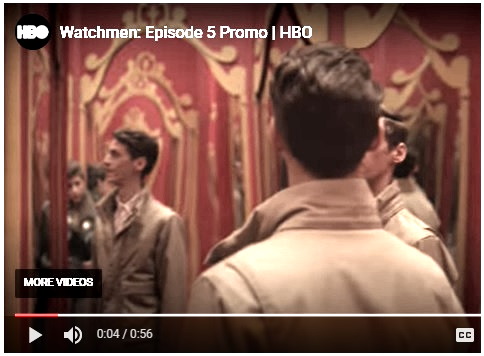
|
"… Wade’s entire life is built around the squid attack. In the episode’s opening, we see that 34 years ago, young Wade was at a carnival in Hoboken, New Jersey, proselytizing as a Jehovah’s Witness when the squid emitted a psychic blast that killed three million people in the New York area. Just before the attack, a girl led him into a house of mirrors, feigning interest in hooking up with him in order to steal his clothes, leaving him naked and humiliated in the fairground attraction. But the cruel prank also saved his life, as mirrors can apparently repel the squid's psychic blast." |
Related literary remarks —
|
"It may have been by chance, and it may have had the side effect of being easy to read, but this way of putting a novel together offered a bridge between the miniaturist in Doerr and the seeker of world-spanning connections. He could focus on the details of every piece in the narrative, but there was pleasure, too, in placing them against each other. Sometimes he would lay out all these micro chapters on the floor so he could see them and discover the resonances between characters across space and time. 'That’s the real joy,' Doerr said, 'the visceral pleasure that comes from taking these stories, these lives, and intersecting them, braiding them.'" — "A version of this article appears in print on Sept. 20, 2021, Section C, Page 4 of the New York edition with the headline: Bringing His Readers To Higher Ground." |
Monday, January 31, 2022
The Prime Mover
"Metaphor in language — the prime mover"
— George Steiner in Real Presences (1989)
Not so prime —
See also the "Transformers" marketing saga.
Related marketing:
Disney Easter eggs —
Wednesday, January 19, 2022
Thursday, May 22, 2008
Thursday May 22, 2008
An Exercise in
Conceptual Art
THE JUDGMENT
Undertakings bring misfortune.
Nothing that would further.

“Brian O’Doherty, an Irish-born artist,
before the [Tuesday, May 20] wake
of his alter ego* ‘Patrick Ireland’
on the grounds of the
Irish Museum of Modern Art.”
— New York Times, May 22, 2008
THE IMAGE
Thus the superior man
understands the transitory
in the light of
the eternity of the end.
Another version of
the image:
See 2/22/08
and 4/19/08.
Michael Kimmelman in today’s New York Times—
“An essay from the ’70s by Mr. O’Doherty, ‘Inside the White Cube,’ became famous in art circles for describing how modern art interacted with the gallery spaces in which it was shown.”
Brian O’Doherty, “Inside the White Cube,” 1976 Artforum essays on the gallery space and 20th-century art:
“The history of modernism is intimately framed by that space. Or rather the history of modern art can be correlated with changes in that space and in the way we see it. We have now reached a point where we see not the art but the space first…. An image comes to mind of a white, ideal space that, more than any single picture, may be the archetypal image of 20th-century art.”

“Nothing that would further.”
— Hexagram 54
|
…. Now thou art an 0 |
“…. in the last mystery of all the single figure of what is called the World goes joyously dancing in a state beyond moon and sun, and the number of the Trumps is done. Save only for that which has no number and is called the Fool, because mankind finds it folly till it is known. It is sovereign or it is nothing, and if it is nothing then man was born dead.”
— The Greater Trumps,
by Charles Williams, Ch. 14
Monday, April 28, 2003
Monday April 28, 2003
ART WARS:
Toward Eternity
April is Poetry Month, according to the Academy of American Poets. It is also Mathematics Awareness Month, funded by the National Security Agency; this year's theme is "Mathematics and Art."
Some previous journal entries for this month seem to be summarized by Emily Dickinson's remarks:
"Because I could not stop for Death–
He kindly stopped for me–
The Carriage held but just Ourselves–
And Immortality.
Since then–'tis Centuries–and yet
Feels shorter than the Day
I first surmised the Horses' Heads
Were toward Eternity– "
|
Math Awareness Month April is Math Awareness Month.
|
|
An Offer He Couldn't Refuse Today's birthday: Francis Ford Coppola is 64.
From a note on geometry of April 28, 1985:
|
|
The Eight Today, the fourth day of the fourth month, plays an important part in Katherine Neville's The Eight. Let us honor this work, perhaps the greatest bad novel of the twentieth century, by reflecting on some properties of the number eight. Consider eight rectangular cells arranged in an array of four rows and two columns. Let us label these cells with coordinates, then apply a permutation.
The resulting set of arrows that indicate the movement of cells in a permutation (known as a Singer 7-cycle) outlines rather neatly, in view of the chess theme of The Eight, a knight. This makes as much sense as anything in Neville's fiction, and has the merit of being based on fact. It also, albeit rather crudely, illustrates the "Mathematics and Art" theme of this year's Mathematics Awareness Month. The visual appearance of the "knight" permutation is less important than the fact that it leads to a construction (due to R. T. Curtis) of the Mathieu group M24 (via the Curtis Miracle Octad Generator), which in turn leads logically to the Monster group and to related "moonshine" investigations in the theory of modular functions. See also "Pieces of Eight," by Robert L. Griess. |
Wednesday, April 16, 2003
Wednesday April 16, 2003
Keeping Time
The title of this entry comes from T. S. Eliot (see below). The subject, and the relevance of the Kipling passage, are from Eleanor Cameron's Green and Burning Tree, itself the subject of an April 15 entry.
Part I
From Puck of Pook's Hill, by Rudyard Kipling
The Theatre lay in a meadow…. a large old Fairy Ring of darkened grass, which was the stage…. Shakespeare himself could not have imagined a more suitable setting for his play….
Their play went beautifully…. They were both so pleased that they acted it three times over from beginning to end before they sat down in the unthistly centre of the Ring to eat…, This was when they heard a whistle among the alders on the bank, and they jumped.
The bushes parted. In the very spot where Dan had stood as Puck they saw a small, brown, broad-shouldered, pointy-eared person….
He stopped, hollowed one hand round his ear, and, with a wicked twinkle in his eye, went on:
'What, a play toward? I'll be an auditor;
An actor, too, perhaps, if I see cause.'
The children looked and gasped. The small thing – he was no taller than Dan's shoulder – stepped quietly into the Ring.
"I'm rather out of practice," said he; "but that's the way my part ought to be played."
Still the children stared at him — from his dark blue cap, like a big columbine flower, to his bare, hairy feet. At last he laughed.
"Please don't look at me like that. It isn't my fault. What else could you expect?" he said.
"We didn't expect anyone," Dan answered slowly. "This is our field."
"Is it?" said their visitor, sitting down. "Then what on Human Earth made you act Midsummer Night's Dream three times over, on Midsummer Eve, in the middle of a Ring, and under — right under one of my oldest hills in Old England? Pook's Hill — Puck's Hill — Puck's Hill — Pook's Hill! It's as plain as the nose on my face."
"…. You've done something that Kings and Knights and Scholars in old days would have given their crowns and spurs and books to find out. If Merlin himself had helped you, you couldn't have managed better!"
Part II
From "East Coker," by T. S. Eliot
In that open field
If you do not come too close,
if you do not come too close,
On a summer midnight,
you can hear the music
Of the weak pipe and the little drum….
… Round and round the fire
Leaping through the flames,
or joined in circles….
… Keeping time,
Keeping the rhythm in their dancing….
Part III
From The Real World, by Anonymous:
Tonight is the night of the Paschal full moon, which is used to calculate the date of Easter.
On this date in 1871, playwright John Millington Synge was born. He wrote of "the wonderfully tender and searching light that is seen only in Kerry."
On this date in 1991, director David Lean died. He showed us the tender and searching light of Kerry in "Ryan's Daughter."
The summer harvest festival of County Kerry is known as "Puck Fair."
The song "The Kerry Dance" includes the following lyrics:
O the days of the Kerry dancing….
When the boys began to gather,
in the glen of a summer's night.
And the Kerry piper's tuning
made us long with wild delight.
Tonight's site music is "The Kerry Dance" arranged in a form appropriate to the spirit of "East Coker" and the spirit of Puck Fair.
Eliot and Eleanor Cameron were both concerned with "keeping time" in a very deep sense. For more on this subject, see my previous entries for April 2003, Poetry Month.
See, too, Midsummer Eve's Dream.
Friday, April 4, 2003
Friday April 4, 2003
The Eight
Today, the fourth day of the fourth month, plays an important part in Katherine Neville's The Eight. Let us honor this work, perhaps the greatest bad novel of the twentieth century, by reflecting on some properties of the number eight. Consider eight rectangular cells arranged in an array of four rows and two columns. Let us label these cells with coordinates, then apply a permutation.
|
|
|
|
|
The resulting set of arrows that indicate the movement of cells in a permutation (known as a Singer 7-cycle) outlines rather neatly, in view of the chess theme of The Eight, a knight. This makes as much sense as anything in Neville's fiction, and has the merit of being based on fact. It also, albeit rather crudely, illustrates the "Mathematics and Art" theme of this year's Mathematics Awareness Month. (See the 4:36 PM entry.)
The visual appearance of the "knight" permutation is less important than the fact that it leads to a construction (due to R. T. Curtis) of the Mathieu group M24 (via the Curtis Miracle Octad Generator), which in turn leads logically to the Monster group and to related "moonshine" investigations in the theory of modular functions. See also "Pieces of Eight," by Robert L. Griess.













